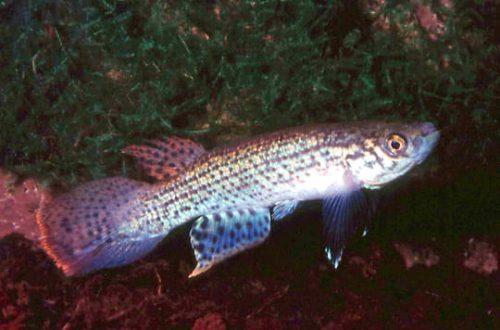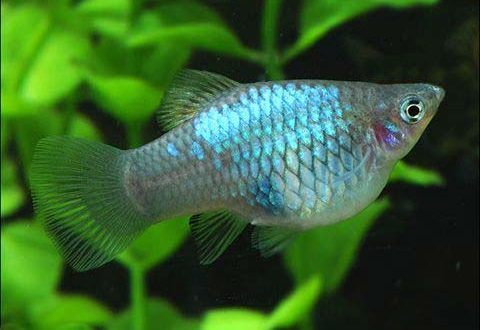
Gourami Selatan
The Cross Chocolate Gourami or Selatan Gourami, scientific name Sphaerichthys selatanensis, belongs to the Osphronemidae family. The fish is named after the Indonesian province of Selatan in southern Borneo. It is considered easy to keep if kept in the right environment and can be successfully bred in the home aquarium. May be recommended for beginner aquarists.
Contents
Habitat
It comes from Southeast Asia from the southern Indonesian part of the island of Kalimantan (Borneo). Inhabits peat bogs under dense rainforest canopy and associated rivers and streams. A typical biotope is a shallow reservoir, the water in which has a rich brown color due to the high concentration of tannins formed as a result of the decomposition of plant organic matter. The bottom is covered with a thick layer of fallen leaves, branches, through which numerous tree roots pass. Aquatic vegetation is found mainly along the coast.
Brief information:
- The volume of the aquarium – from 40 liters.
- Temperature – 23-30°C
- Value pH — 4.0–6.5
- Water hardness – 1–5 dGH
- Substrate type – any dark
- Lighting – subdued
- Brackish water – no
- Water movement – little or no
- The size of the fish is about 4 cm.
- Food – any food
- Temperament – peaceful
- Content – single, pair or in a group.
Description
It is considered a related species of the Chocolate Gourami and shares many traits with it. Adult individuals reach a length of about 4 cm. The fish has a high body with a large pointed head. The coloration is gray-brown with a pattern of light horizontal and rows of vertical stripes. Some individuals have reddish fins and a number of authors are inclined to assume that this is a separate subspecies. But at the time of writing, no official separation has taken place. Sexual dimorphism is weakly expressed. Males, unlike females, have a somewhat rounded lower part of the head. Otherwise they are identical.
Food
The fish, living in the artificial environment of the aquarium for generations, have adapted to accept alternative foods in the form of flakes, granules. You can diversify your daily diet by including live or frozen foods such as brine shrimp, daphnia, bloodworms, etc.
Maintenance and care, arrangement of the aquarium
The optimal size of the aquarium for a pair of fish starts from 50 liters. Not picky about keeping, although conditions reminiscent of the natural habitat will be preferred. It is recommended to provide a lot of shelters in the design. These can be thickets of shade-loving plants, driftwood, decorative items intended for aquariums, etc. The substrate is dark soft, on top of which the leaves of some trees (beech, oak or Indian almond) are often placed. They serve not only as part of the decoration, but also as a means of giving the water a composition characteristic of the natural habitats of the Cross Chocolate Gourami. Read more in the article “Which tree leaves can be used in an aquarium.” If you plan to use live plants, then Java fern, Java moss, Cryptocoryne, Anubias and the like are good choices.
Long-term successful management depends on maintaining a stable aquatic environment within acceptable temperature and hydrochemical ranges. To this end, they carry out regular maintenance procedures for the aquarium and equip it with the necessary equipment, primarily a filtration system.
Behavior and Compatibility
A slow peaceful fish that will not be able to compete with other active species for food, therefore, with such a neighborhood, there is a high probability of their malnutrition. Compatible with other calm fish from the Rasbor, some Danios and loaches. They prefer to be in the community of relatives. It is advisable to purchase a group of 6 individuals. It is worth avoiding the addition of Chocolate Gourami to minimize the risk of hybridization of offspring.
Breeding / breeding
There is some confusion in various sources as to what kind of breeding strategy is inherent in this type of gourami. Some indicate that they build foam-air nests, others that the male takes the eggs in his mouth and wears them until the fry appear. The latter is closer to the truth, only females do it. With the onset of the mating season, the color becomes more saturated, and the stripes acquire a golden hue. The male or alpha male, if kept in a group, initiates courtship. The fish cling to each other in a kind of dance and at this moment spawning occurs. Fertilized eggs are taken by the female, which she carries in her mouth for up to 20 days, after which 10–40 fully formed fry appear. At this time, the female does not eat and seeks to hide in a safe place. In some cases, it is advisable to temporarily transplant it into a separate tank with identical water conditions.
Fish diseases
The cause of most diseases is unsuitable conditions of detention. A stable habitat will be the key to successful keeping. In the event of symptoms of the disease, first of all, the quality of the water should be checked and, if deviations are found, measures should be taken to correct the situation. If symptoms persist or even worsen, medical treatment will be required. Read more about symptoms and treatments in the Aquarium Fish Diseases section.





